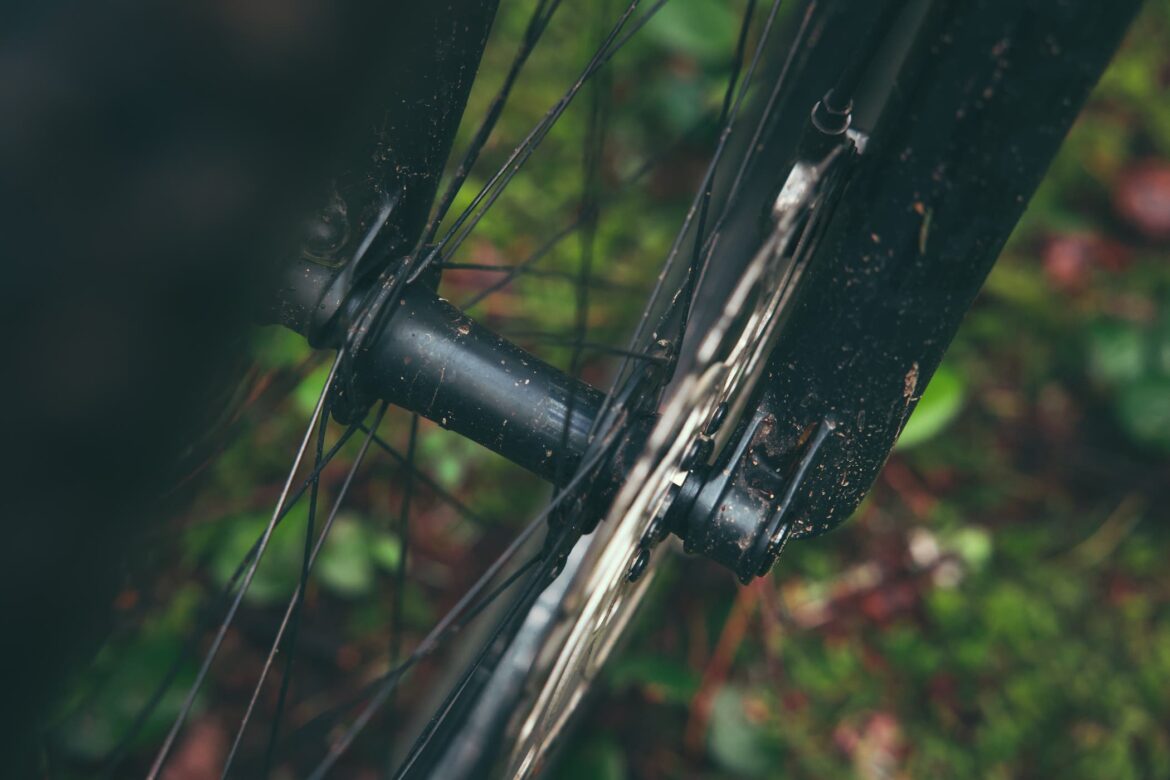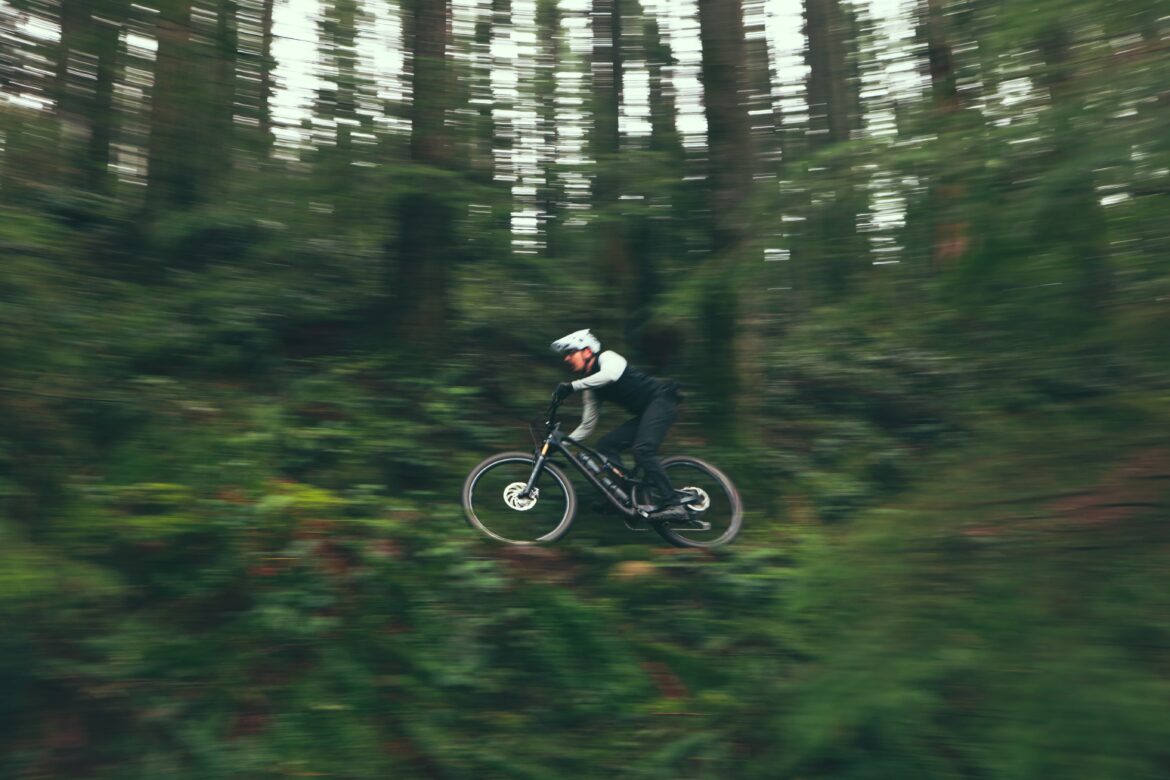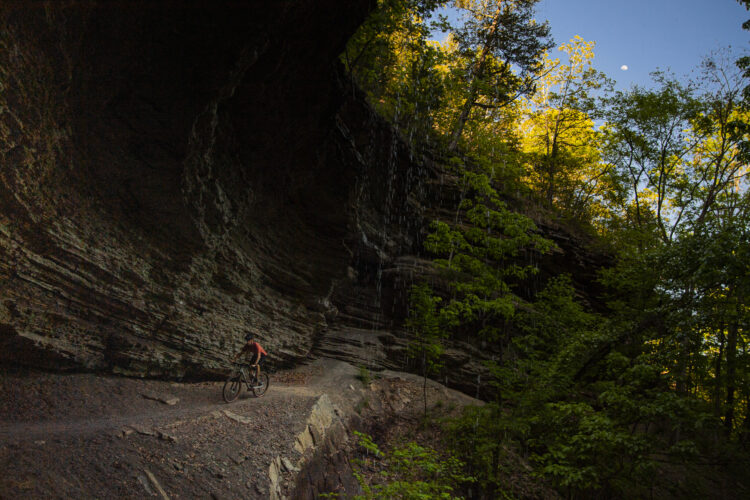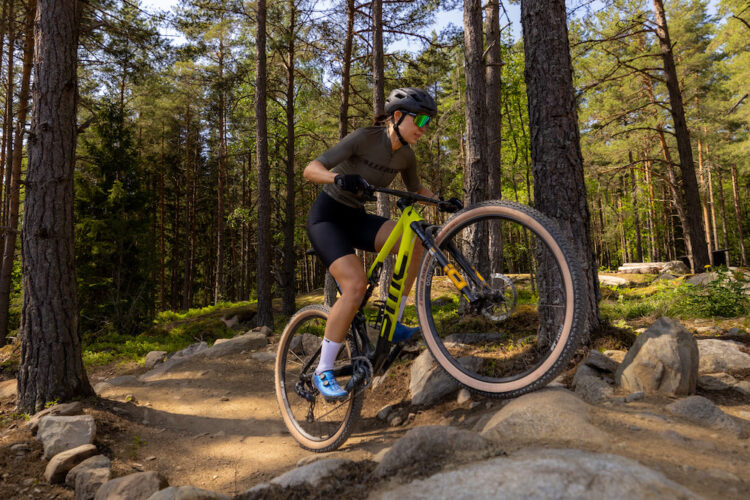
Downcountry is a term that was coined a few years ago, much to the distaste of many riders. While the term itself might sound silly, it’s no more or less appropriate than “all-mountain” or “trail”, which are similarly indistinct. The truth is that terms don’t actually describe the riding that you can do on a bike because, spoiler-alert: you can ride your bike anywhere and anyhow you damn well please. Instead, terms like gravel describe certain characteristics about a bike; the things that set it apart, such as the ability to run big tires or drop bars.
Downcountry, for those who aren’t up to speed, describes a bike that has traits that give it the climbing prowess of a lightweight cross country bike, but the descending capability of a much bigger bike. These are features that have come about as the results of contemporary explorations into geometry, suspension technologies, carbon manufacturing and other wondrous things the combination of which results in something that could never before have existed. If you check out the Rocky Mountain website, you’ll find the Element under the ‘cross-country’ category, which to me seems to be massively downplaying what this bike can really do. Rather than unfairly pigeon-holing it, I think a title suitably vague such as ‘downcountry’ describes it best.
Rocky Mountain Element frame details
On test here is the top-spec carbon Rocky Mountain Element C90, and starting with the heart of the bike, the frame is more than just something from which to hang parts. First laying eyes on the bike it clearly means business; the skinny frame tubes are reminiscent of a thoroughbred cross-country machine, but look a little closer and the chunky spine of the bike, the head tube, downtube, BB and chainstays belie its intentions as something more than just an XC bike.
Those svelte-looking tubes result in one of the standout features of the bike: the weight. Coming in at 26lb for the complete bike without pedals, the Element is a real featherweight for a bike in this travel bracket. Fit and finish on the frame is good with tidy paint, nice hardware and clean edges. The black seen here has subtle graphics in grey, and the slightly wilder green/blue color looks smart too. While this test bike has a carbon frame, there are also aluminum frame options at every price point imaginable. Available in five frame sizes, from S-XL, the bike comes with 29″ wheels except size XS, which rolls on 27.5″ hoops. I tested a size L bike.

The Element has truly stunning lines, and to keep those unspoiled the hoses and cables are all internally routed. The cable ports have plastic covers which are not as clean as other brands but give the option to cover up unused holes. The pivots use aluminum hardware that feels sturdy, and small bearings that again keep things sleek and light. Whether they’re durable enough is a different question, but for the test period they gave me no issues. One of my favorite features of the frame is the ability to run two bottle cages which massively expands the scope for big rides with a small pack.
Using Rocky’s typical hanging-link design, the Element serves up 120mm of progressive rear suspension, and 130mm up front. In terms of frame standards, the rear brake caliper bolts into a 160mm post mount on the chainstay and the bottom bracket is a PF92 pressfit, while the headset is a ZS 41/52mm affair. The frame takes a 190x45m shock with Rocky Mountain’s proprietary sealed eyelet bearings, the rear axle spacing is standard Boost and the seatpost diameter is 30.9mm. This is mostly standard fare, but you’ll want to make sure you have an available supply of bearings for the shock eyelet because while they do last, they’re not a super common size. However they should be available from most decent Rocky dealers.

Rocky Mountain Element geometry
Using Rocky Mountain’s Ride 4 chip there are four different geometry positions available from low and slack, to slightly less low and slack. Let it be known that the geometry is on the aggressive side for a bike of this travel, and that’s not a bad thing. The head angle ranges from 65º to 65.8º at the steepest with a seat tube angle from 76º to 76.8º, and reach from 475mm to 483mm. The bottom bracket drop ranges between 47mm and 36mm with chainstays that are 435mm long across the board.
Overall the geometry is more on the modern enduro side of things than cross country, with the steep seat tube angle meaning it doesn’t have the super lengthy cockpit of a real XC race bike. Instead it has a more upright pedaling position, with other angles optimized more for descending than climbing, which is interesting.

Build spec
The Rocky Mountain Element carbon bike is available in four different spec levels, and I’ve been testing the highest-level C90 spec, priced at $9,699. There are also three aluminum spec levels with prices starting at $2699. Most of the range comes with a Fox 34 fork dropping to Rockshox Recon and Judy forks at the lower level with matching Fox Float DPS shocks and Rockshox Deluxe shocks lower down. This particular bike is equipped with Fox Factory suspension with the Fit4 damper in the fork. It’s not my favorite but presumably specced for its ability to fully lock out, and the seatpost is a Fox Factory Transfer.

This top tier model comes dripping in carbon: the bars are Race Face Next 780mm carbon mated to an in-house 50mm stem, with Race Face Next SL cranks, in-house wheels with “26 XC carbon” rims on a DT Swiss 350 hub and in-house front hub and a WTB Silverado carbon saddle. While the stem and front hub do the job well enough, I might’ve expected a brand name for the money, ie a matching DT Swiss 350 hub and a Race Face stem. The in-house rims are a nice surprise given that at first glance I assumed they were a Race Face product, since they’re well finished and very lightweight, though it wouldn’t surprise me if they were made by Race Face. The wheels on this bike came wrapped with aggressive XC Maxxis Forecaster tires. I did swap these out for Vittoria Agarro tires with their new Air Liner Light insert.


This build features a Shimano XTR groupset with the exception of the cranks and chainring. The latest 12-speed M9100 drivetrain shifts like an absolute dream, running quiet and trouble free; it’s truly the pinnacle of mechanical shifting. The brakes are 2-piston Shimano XTRs with 180mm rotors which I found to be lacking in power. It’s worth noting is that the top spec XTR 2-piston brakes are XC-race focused and use Shimano’s smaller road bike brake pad standard, rather than the full-sized MTB brake pad which the less expensive XT version uses. So, XTR is an upgrade in price and weight but a downgrade in power. The specced brakes feature the race lever with carbon blade instead of aluminum and a tooled reach adjust which is an upgrade in weight savings but a downgrade in terms of adjustability.



Setup
Setup on the Element was easy enough for me. It was suggested that I start at my body weight in pounds for rear shock pressure. I started at 175psi for this 175lb rider and bumped it up to 185 for 12mm (26% sag) and found that this worked well for me. With the progressive leverage curve I found it supple enough yet efficient without finding the end of the travel too often. On the fork I went with the firmer end of the factory recommended settings at 85psi and found that it would dive a little more than I like compared to a Grip 2 fork. In all likelihood some volume tokens would help with this.
Geometry-wise the Element uses Rocky’s Ride 4 adjustment system which takes the shape of a square flip-chip with four possible orientations for four different geometries/shock curves. I spent most of the test period in the neutral setting, but experimented with some slacker positions, finding that neutral worked best for me, balancing the higher BB height for technical climbing with geometry that still felt nimble yet stable at speed.

On the trail: Climbing
The Rocky Mountain Element weighs 26lb, so of course it climbs well. Not only does it go uphill quickly though, it climbs incredibly for how well it performs when pointed downhill. Blurring the lines from XC to trail and maybe even beyond that, it certainly outperforms its credentials. It isn’t a thoroughbred race machine, and if that’s what you want you’re looking in the wrong place. It still has a 130mm fork and 120mm of travel out back, but that long travel — for a cross-country bike at least — helps the Element really dig in when climbing.
While putting power down it feels stiff and efficient, yet there’s a little squat under pedaling. If you’re used to a ‘proper’ XC bike the Element might feel soft, but the bike lends itself to keeping that power on chunky sections of trail rather than spinning its rear wheel. However I did find that the cross-country tires were more likely to break traction on loose climbs than a more aggressive ones.
The real ace up the Rocky Mountain Element’s sleeve is how well the bike balances traction with weight. The Element has the traction of a bigger bike but the snappy acceleration of a cross-country machine so a more aggressive tire would mean even more traction on chunky climbs and better grip on the descents, and could well be a good idea for some.
The only real complaint I have while climbing is that the low BB means a lot of pedal strikes on technical climbs since even in the higher modes, the BB is still quite low. The Element is extremely agile however, and the low weight and poppy suspension means it’s easily picked up and put wherever you want it, making trail obstacles a breeze. With a little forward planning it’s easy enough to avoid those rocks and roots and keep the pedals spinning freely. The long reach necessitates the steeper seat tube angle for a comfortable climbing position with the front wheel weighted nicely and barely wandering, though the length of the bike makes it a bit more of a handful to push around tight switchbacks than a traditional XC bike.
Overall the Element keeps pace really well on the climbs, balancing comfort and speed well. Anyone coming from an enduro bike will feel a familiarity in the geometry with comparatively fast speed and acceleration.

Descending with the Rocky Mountain Element
When the trail points downhill is where the Element comes alive. It’s fast. Really fast.
The way this bike climbs and descends truly makes it one of the most versatile and fun bikes I’ve ever ridden. The long reach and slack head angle mean that when things go downhill, it picks up speed quickly, though the short travel means the rider needs to work to keep pace. Smoother trails are an absolute joy; the Element could be a much bigger bike for the speed it carries. The shorter chainstays and a low BB mean it corners incredibly well with very little effort even at breakneck speed, and the combination of all the above makes the Element feel surprisingly at home in the air.
Medium-sized drops are easily absorbed without feeling harsh; the progressive rear suspension doesn’t bottom out easily or obviously, and I found the fork reaches the limits of its travel more often than the rear shock. When things start to get really chunky however, the shorter travel starts to become more apparent. Chattery, rough sections of trail are less easily absorbed than on a bigger bike.

Big holes with nasty compressions are a little jarring also, with the flex in the fork feeling noticeable compared to something bigger and stiffer. Thankfully the low weight and poppy suspension makes the bike easy to put where you want it and a skilled bike handler will be able to finesse their way down the trail on the Element. Given the skinny tubes, you might assume that the frame has a lot of flex, but this wasn’t something I noticed. Certainly the more cross-country tires and lack of suspension limit how far you can push the bike before flex becomes an issue.
One weak point on the Element build is the brakes. Those 2-piston XTRs are lacking in power and don’t match up with the capability of the bike. Once the bike is up to speed, it takes a while to stop with those teeny brake pads, and while an upgrade to a 203mm rotor up front did help, the bike needs more stopping power. Thanks to the lack of power I also found myself wanting to adjust the lever reach out constantly, not helped by the lack of tool-free adjustments on the levers. Thankfully this is a simple spec issue, and XTR 4-piston brakes would be a welcome addition and a necessary upgrade were I to keep the bike long term.

The Element is also a ton of fun on flatter trails. The low weight and nimble handling makes it really easy to get up to speed on the flats and to ride for hours at a time. The ability to put down power and get the bike up to speed easily makes less steep trails a lot more fun than they are on a bigger, heavier bike. The tires that came stock work really well for this reason, with low rolling resistance but decent-sized knobs so they grip better than expected, especially in mixed conditions. You could fit heavier, more aggressive tires, but to me that almost ruins the point of the bike.
The best thing about the Rocky Mountain Element is the variety of terrain on which it feels at home; it’s happy on cross-country and gravel rides, burly enduro descents, and everything in between. Even better is that it opens up new places and ways to ride. Trails that are otherwise uninteresting become fun, and I found myself putting together new rides with trails that might be a bit too gnarly for a gravel bike, but just wouldn’t be fun on an enduro bike. For these reasons the Element quickly became my go-to for quick before or after work trail rides, big stupid all-day rides and much more.
While on test I put the Element through a ton of abuse, and rarely found a hard limit, though I did break the seat rails riding through a trail compression seated. The failure didn’t result in any type of crash or injury, but I do feel like a saddle with carbon rails is somewhat out of place on a mountain bike, even on a lightweight bike like the Element.

Pros and cons of the Rocky Mountain Element
Pros
- Incredibly light for a bike with this travel & geometry
- Aggressive geometry inspires aggressive riding
- Incredibly versatile
- The most fun I’ve had in ages
Cons
- Needs bigger brakes
- Carbon seat rails
- Low BB means lots of pedal strikes

Bottom line
The trails here in BC are globally renowned for being unrelentingly steep and gnarly, with huge elevation, and the Rocky Mountain Element feels perfectly equipped to tackle just that, over and over again. Rocky Mountain has made the perfect bike for the BC Bike Race — a multi-day stage race that sees racers riding gnarly trails for hours at a time, day after day. For those in flatter parts of the world, the Element would be an incredibly fun and efficient trail bike and something I’d feel happy riding day in and day out, easily out-climbing and out-descending much bigger bikes.
Capable of not only getting down gnarly trails but actually feeling comfortable on them, the limitations of this bike are truly with the rider. My most memorable day on the Element was a cross country type ride before work and downhill trail shuttles after work. Not only did I keep up in the morning and survive in the evening, I had fun on both rides, without feeling like I had brought the wrong bike on either occasion. I showed the Element no mercy while riding it and it stood up to the abuse admirably, with the only casualty being that broken seat.
The Rocky Element is a real category-defying bike. With almost XC bike weight, trail bike travel and enduro bike geometry, I’d say that’s about as downcountry as it gets. Regardless of what you want to call it, the Element is a bloody brilliant bike that is far more than the sum of its parts, and some of the most fun on two wheels I’ve had in a long time. I highly recommend it.
- Price: $9,699 as tested. Builds from $2,699.
- Buy from The Pro’s Closet and JensonUSA.






Incredible how slack it is. As slack as “Downhill” bikes of 5 years ago.
Crazy isn’t it? Just goes to prove how far wrong we were with geometry in years past. Not every bike needs to be as slack as this, but personally I don’t think there’s much room for 69º head angles these days – suspension platform and weight makes a bigger difference to how a bike climbs, in my opinion.
Frankly, I cannot stand the caster angle that steep HA leads to. But then, I really dislike the steep STA’s that are common these days.
Solid review. Sounds like an awesome bike, despite some quirky component specs.
Thanks – it’s definitely worth bearing in mind that living in BC bikes here definitely get punished more than most other places!
I considered the Element for my BCBR build but came across a Revel Ranger frame and fork deal that was too good.
I’ve got beefier brakes (Hayes T2) 34 Grip 2, and bigger tires weighing in at 28lbs so very comparable.
I recently tested an Orbea downcountry bike that was 23 lbs.
Man did that accelerate on smooth terrain but was useless on technical climbs .
It had the same 2 piston XTR brakes and they scared me.
The Element is an intriguing bike and something I’d like to try out on my local trails along the Colorado front range. I’m curious how other similar bikes like the Transition Spur and Trek Top Fuel would do out here as well. My last two bikes have 150mm of travel which, while definitely appreciated sometimes, seem like too much most of the time.
I suspect something in the 120 mm rear travel range is the right choice for 90% of my riding, and I’d like it to be a great pedaler if I’m going to give up that much plushness. I like the idea of the slack-for-the-class head angle of the Element mainly because, coming from a dirt bike background, that just feel more “normal” to me.